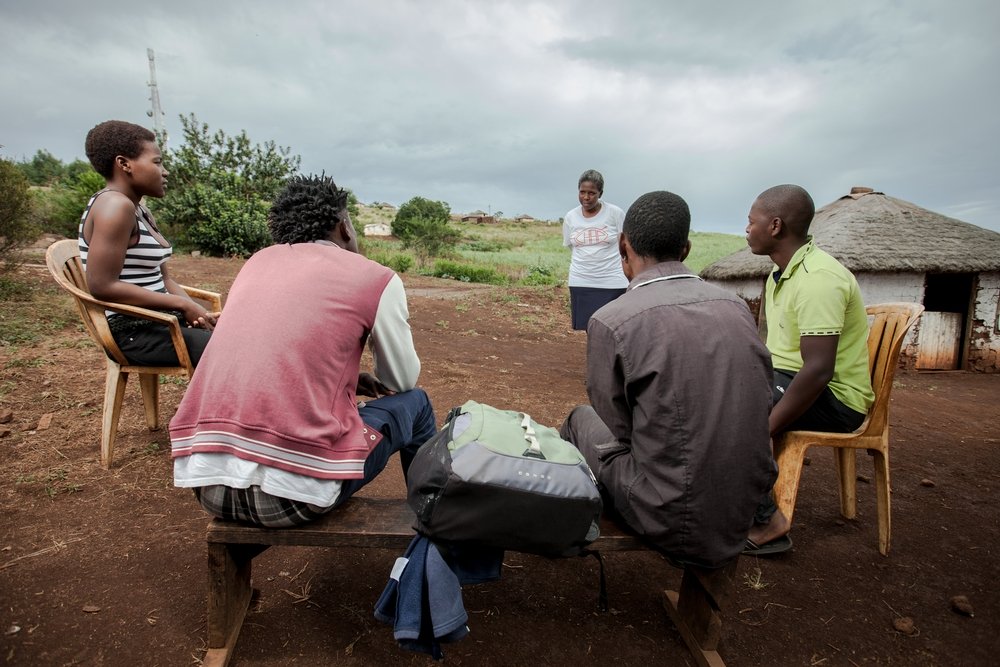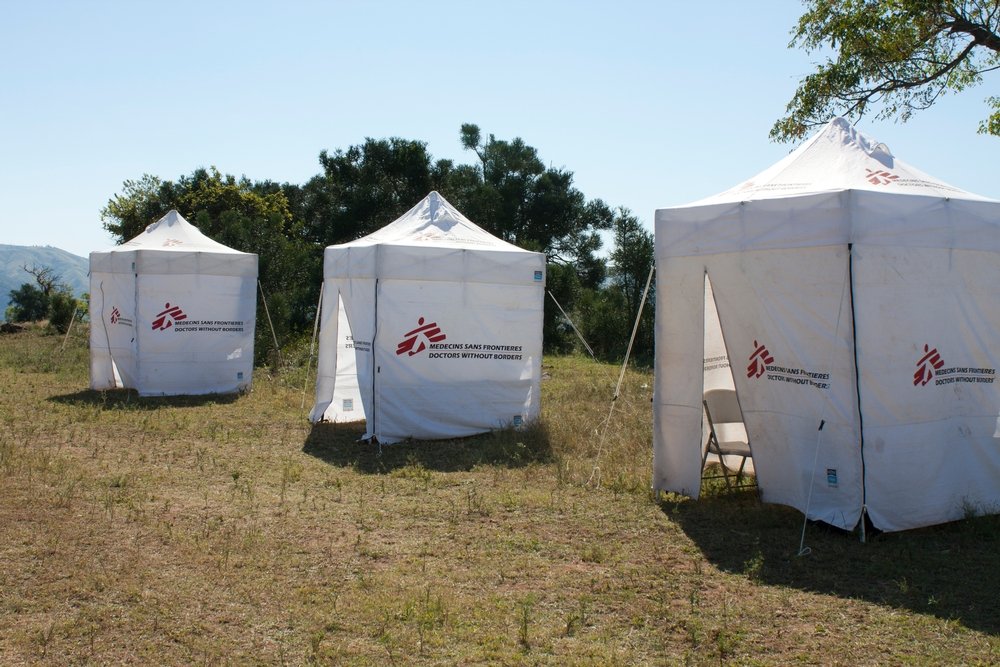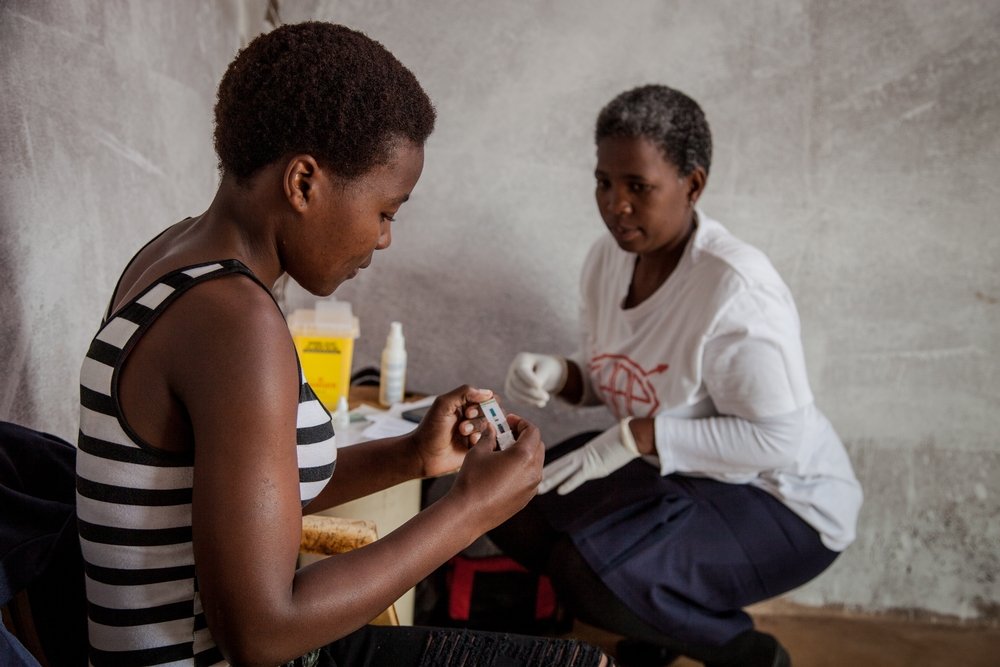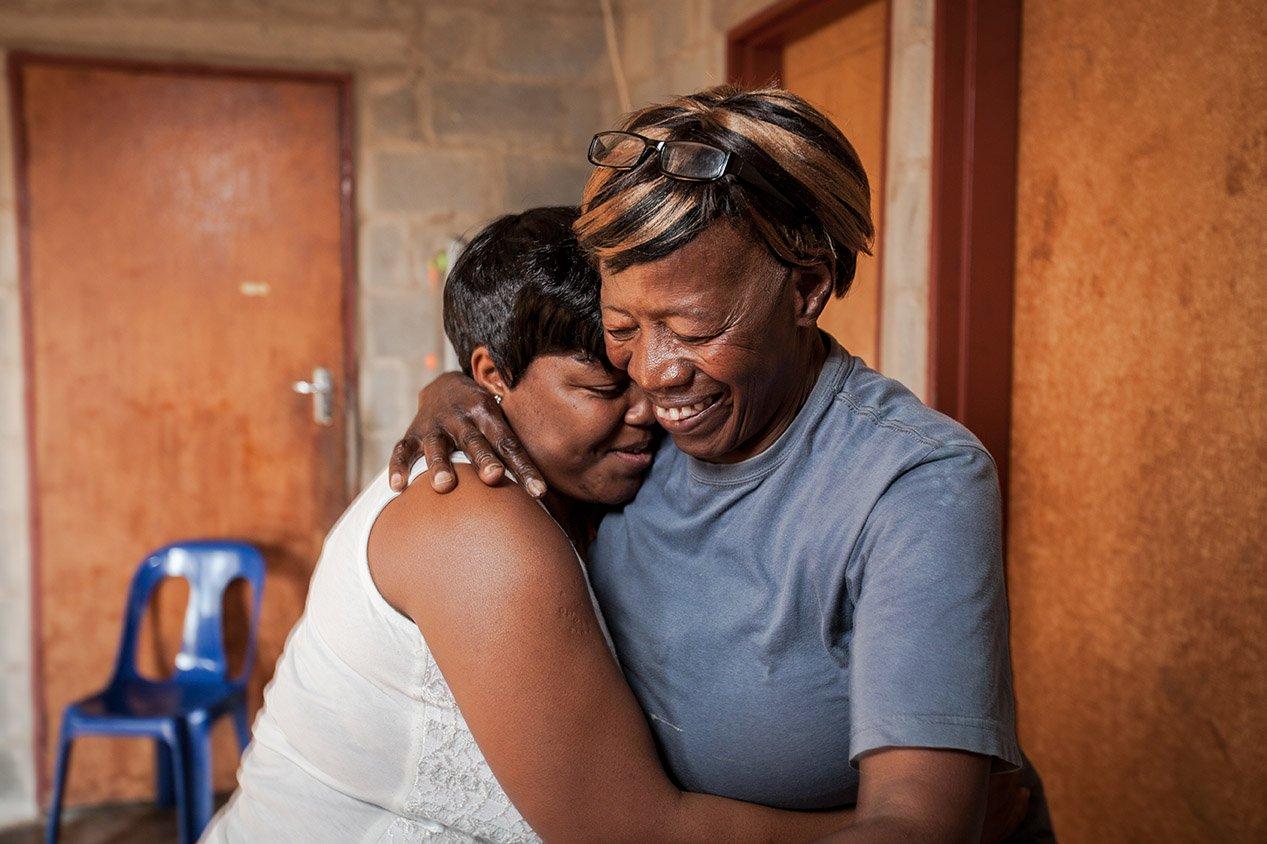The international medical humanitarian organization Doctors Without Borders (MSF) today released findings from a follow-up survey of its community-based HIV/TB project in Eshowe, KwaZulu Natal. It shows that the project has achieved the UNAIDS targets of 90-90-90[1] one year ahead of the 2020 deadline, with results of 90-94-95: 90% of people living with HIV know their status, 94% of those were on antiretroviral treatment and 95% of those had a suppressed viral load. The results support MSF’s view that interventions at community level can successfully reach and directly support more people living with HIV who do not access conventional health services, which is key to getting ahead of the HIV epidemic.
Along with similar findings from several other HIV population surveys, including two surveys released at SAAIDS this week[2], the MSF results provide strong evidence that achieving the 90-90-90 targets is possible in South Africa, along with hopeful data suggesting that the number of new infections is decreasing in certain areas.
The 90-90-90 target is an important indicator of the success of a country’s HIV response, with South Africa’s national results estimated at 85-71-86 (HSRC, 2018).

“We’ve shown that it’s possible to reach 90-90-90 in an area with one of the highest HIV infection rates in the country, where one in four people is living with HIV. These results are testament to the full engagement of the entire community. Everyone - from local civil society and patient groups, health staff and traditional health practitioners, traditional leaders and their members – was deeply involved in designing and helping this project to deliver from the beginning, said Dr Liesbet Ohler, Project Medical Referent, Eshowe.
“Importantly, we have ensured 94% of people who tested HIV positive started treatment, including people who are much less likely to test for HIV and link to care, such as men.”

The MSF Epicentre population-based survey, which included 3,286 people aged 15 to 59 years, is a follow up to a 2013 survey done by MSF and Epicentre in the same area which was performed to inform priority activities. The 2018 survey found a significant increase in overall HIV status awareness (increased by 14%) and in starting people on treatment (increased by 24%) between 2013 and 2018. Among men, there were striking increases in knowledge of HIV status (first 90), from 68% to 83% and on treatment (second 90), from 68% to 87%.
Preliminary HIV incidence results (which means the number of new HIV infections) show a trend to decrease, from 1.2% in 2013 to 0.2% in 2018. This is supported by survey findings which show that among the people surveyed, the proportion of those living with HIV who were virally suppressed increased from 56% (2013) to 84% (2018), signifying a dramatic reduction in the number of people with the potential to transmit HIV .

However, MSF cautions against interpreting the survey results as an outright declaration of victory, with significant challenges remaining among specific age groups. “While incidence decreased among women aged 15-29 years from 2.9% to 1.2%, this figure remains high and points to the continued risk faced by adolescent girls and young women, said Dr Laura Trivino, MSF’s Medical Coordinator for South Africa. “Difficulties remain in reaching men, who overall achieve poorer treatment outcomes across the cascade. More than half of young men aged 15 to 29 years diagnosed with HIV are still not on treatment. We hope these findings will help focus our collective energies on reaching these groups who remain the most vulnerable to HIV.”
The ‘Bending the Curves’ project, which started in 2011 before the 90-90-90 targets were set by UNAIDS in 2013, aimed to bend the curves of new HIV infections, and HIV-related illness and death. Numerous activities were launched in partnership with communities and the KwaZulu Natal Department of Health to prevent HIV infection, increase HIV testing, link people quickly to care, and support their adherence, retention, and suppression on treatment. Today the project covers ten clinics and two hospitals.
Early on, the project invested in community-based prevention and HIV testing strategies, including extensive door-to-door testing by lay workers, with over 120,000 door-to-door tests conducted between 2012 and 2018. Between 2015 and 2018, 1,35 million condoms were distributed annually.
“How did Eshowe get to 90-94-95? I would say it’s the power of partnership. We had the total commitment of the traditional leadership, and close collaboration with the departments of Health and Education at each stage, says Musa Ndlovu, MSF’s Deputy Field Coordinator in Eshowe.
“In the early days of this project, it was almost impossible for people to even imagine talking about HIV. Today people even stop our MSF vehicles and ask for an HIV test. We didn’t do it for the community, we did it with them.”
[1] ’90-90-90’ treatment goals require that 90 per cent of people living with HIV know their status, that 90 per cent of people living with HIV initiate and remain on ARV treatment, and that 90 per cent of people on ARV treatment reach and maintain an undetectable viral load
[2] 1. The South African National HIV Prevalence, Incidence, Behavior and Communication Survey (HSRC, 2017); 2. The HIV Incidence Provincial Surveillance System (HIPSS) in Vulindlela and Greater Edendale subdistricts KwaZulu Natal; 3. DREAMS Evaluation Study HIV Incidence in eThekwini and uMgungundlovu in KwaZulu-Natal and City of Johannesburg and Ekurhuleni in Gauteng
[3] Viral suppression means that the antiretroviral treatment is successfully suppressing the amount of HIV virus in a person’s blood, ensuring overall health and greatly reducing the chances of HIV transmission. It was defined as viral load <1,000 copies/ml
[4] The landmark HPTN 052 (2011) study confirmed that people living with HIV who were taking treatment successfully and had viral suppression have a 96% reduced chance of transmitting HIV www.aidsmap.com/Treatment-is-prevention-HPTN-052-study-shows-96-reduction-in-transmission-when-HIV-positive-partner-starts-treatment-early/page/1879665/
